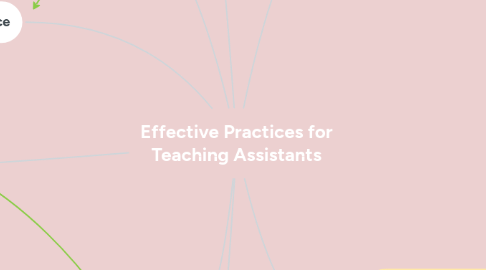
1. Ensure topics covered on each type of pre-assessment consist of questions that students can realistically answer based on what they have learned in the course so far.
2. Topics
3. Method
3.1. Vocabulary & Definitions
3.2. Applicable Examples
3.3. Practice Problems
3.4. Auditory-musical
3.4.1. sound
3.4.2. music
3.5. Visual-spatial
3.5.1. pictures
3.5.2. images
3.5.3. spatial understanding
3.6. Physical-kinesthetic
3.6.1. body
3.6.2. hands
3.6.3. sense of touch
3.7. Verbal-linguistic
3.7.1. speech
3.7.2. writing
4. Tone of Voice
4.1. clear
4.1.1. Clarity
4.1.1.1. Ensure that questions are clear on what they are asking of the students in order to guide them into the right direction of thinking.
4.2. concise
4.3. confident
4.4. engaging
5. Relevance
5.1. meaningfulness
5.2. usefulness
5.3. practicality
6. Pre-Assessments
6.1. Warm-Ups
6.1.1. Put students in small groups and ask exploratory and essential questions. Have them discuss potential answers and come up with a joint response. Ask each group to share their responses for at least one question.
6.2. Homeworks
6.2.1. Create an assignment designed to take thirty minutes to complete. The questions can be in any format and it is acceptable to ask free response questions, as well as multi-step problems. Students should be allowed to use their notes to apply what they know, and collaboration among classmates is encouraged but not required.
6.3. Quizzes
6.3.1. Create a short timed quiz designed to take no more than ten minutes to complete. The questions should be multiple choice, select all that apply, or fill in the blank. Any calculations should be simple enough so that the student can do them mentally and not require a calculator.
6.4. End Goal
6.4.1. By the time pre-assessments have served their purpose, students will be asked to take an exam. The exam will serve as a point of comparison relative to the pre-assessments. Thus, it will check for mastery of the chapters covered, and allow for instructors to build upon the pre-assessments for the chapters yet to be covered.
6.5. Process
6.5.1. When designing the discussion sections, it is important to note that these students will need a little more hand-holding than the traditional college student. Thus, it is a good idea to start discussions off with a group warm-up exercise. As the semester goes on, it is beneficial to sprinkle open-note homework assignments and closed-note quizzes throughout.
7. Understanding the Target Audience
7.1. Pre-Requisites
7.1.1. While there are no official pre-requisites for this course, it is recommended that students take Principles of Microeconomics prior to taking Principles of Macroeconomics. A microeconomics foundation will enable students to build upon the standard Supply & Demand model and its associated shift factors. This foundational knowledge is also covered in the first three chapters of the course textbook.
7.2. Background Knowledge
7.2.1. Students taking this course do not need to be interested in the Economics major. The class is taught as a social science from a humanities perspective. Not only does it fulfill general education requirements, but it also acts as an entry point for many schools and majors at the University. The student will have a solid working knowledge of the economy as a whole by the completion of the course, and for this reason the subject matter is applicable to a variety of majors.
7.3. About the Student
7.3.1. Students taking this course are undergraduates at the University of Virginia. Many of the students taking this introductory course are first-years who have little experience taking a college-level class. Thus the grading style, lecture format, and examinations may be very new to them.
8. Presentation
8.1. Sense of Humor
8.1.1. Makes jokes
8.1.2. Takes jokes
8.1.3. Appealing
8.1.4. Sarcasm
8.1.5. Not hurtful
8.2. Relatability
8.2.1. Charisma
8.2.2. Charm
8.2.3. Understanding
8.2.4. Open-minded
8.3. Awareness
8.3.1. Notices struggling students
8.3.1.1. Approach them and find out how to help them
8.3.2. Tests if material is grasped by all
8.3.2.1. Go back over material that is still not clear
8.3.3. Realize when teaching style isn't working
8.3.3.1. Fix it or make appropriate changes

